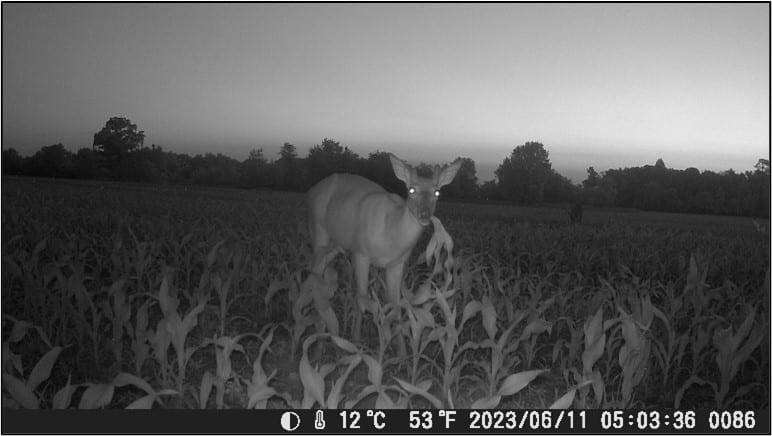
Based on some observations in prior years, we planted irrigated corn on three different timings (April, May, and June) to observe three outcomes 1) yield, 2) nutrient uptake, 3) herbivory by deer. Average yields were all below 200 bushels, at 143, 175, and 128 bu/acre in the April, May, and June planted plots, respectively. Yield losses are potentially related to a range of factors, including deer feeding, weather, and soil nitrogen.
Deer feeding focused on the earliest planted plots (April), with some feeding occurring in the May planted plots. It is deer feeding that most likely limited the April and May yields (Figure 1). The June planted plots received very little deer feeding through the season, but ears were stunted due to the interactions with summer weather and planting timing. Tissue nutrient analyses will be completed this winter to examine interactions with uptake, particularly as nitrogen appeared to be limiting.
Evidence of concentrated feeding can be observed in Figure 2, where the dotted yellow box represents the first (1) planting timing in April. Plots were side by side, so deer had the opportunity to feed on June planted corn (3), but preferred the more mature corn through most of the summer. I am not a wildlife expert, and cannot give advice on what this means outside of watching your earlier planted fields and testing out planting timings along wood edges.
(funded by Maryland Grain Producers https://marylandgrain.org/)


